What is the role of a Periodontist?

According to statistics, 90-95% of the world’s population suffer from periodontal diseases. However, patients usually contemplate consulting a periodontist until they are referred to one. Many people are completely unaware of the role of this specialist.
Who is a periodontist? What kind of issues do they treat? In what cases are patients referred to them for consultation? Dr. Tetri, a periodontist with 20 years of experience in surgical periodontology, will provide us with a bit of insight into this field.
What Does a Periodontist Do?
Gingiva (gums).
Cementum (covering the tooth root and neck).
Alveolar bone.
Periodontal ligament (connecting the tooth to the alveolar walls).
The tissues of the periodontium provide secure attachment of teeth within the jaw and ensure proper distribution of forces during chewing.
A periodontist manages periodontal pathologies, restores the health of the surrounding tooth tissues, and prevents their deterioration. This is a specialized field requiring advanced education. A periodontist possesses up-to-date diagnostic and treatment techniques for periodontal tissue diseases.
Not all periodontists treat the same conditions!
For instance, a conservative periodontal therapist treats oral tissue diseases solely through non-surgical methods (without surgical intervention).
A surgical periodontal specialist addresses more profound gum issues through surgical procedures. They perform gingivoplasty as well as curettage of periodontal pockets in the gums.
Why might you be referred to a Periodontist?
An examination by a periodontist is recommended if you have:
Dental Implant Placement by a Periodontist
The installation of dental implants can be performed by general dentists, oral and maxillofacial surgeons, and periodontists. However, periodontists are experts in implantology. After dental school, they undergo an additional 3 years of training. This education includes in-depth surgical preparation. Most dentists do not possess such experience.
Implant Placement Involves Gum and Jaw Surgery. This forms the foundation of a periodontist’s work. They have a better understanding of the structure of the soft and hard tissues of the oral cavity. Unlike other practitioners, a significant portion of a periodontist’s work is associated with tooth implantation. Thanks to the knowledge and experience of periodontists, dental implant procedures are successful in nearly 100% of cases today.
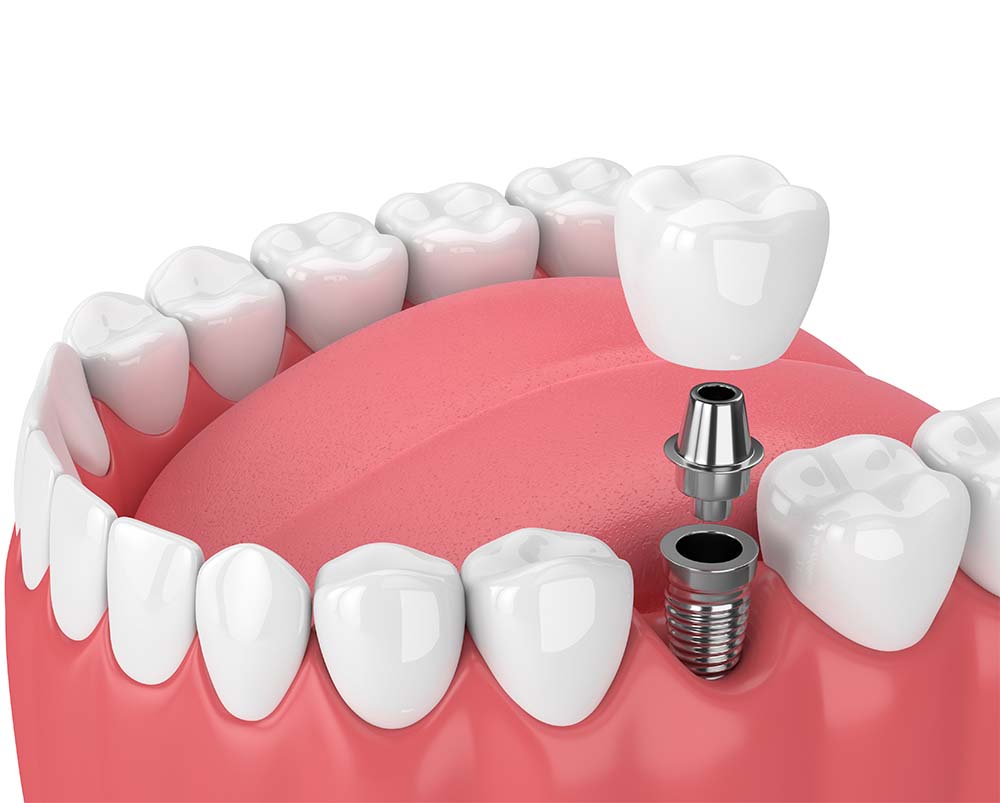
Implant Placement by a Periodontist
In dental medicine, periodontists are experts in treating both hard and soft tissues. A successful implant placement requires extensive knowledge of both tissue types.
Dental implantation is a surgical procedure. Periodontists possess skills in advanced surgical preparation. This enables them to prevent and treat any complications that arise after implant placement.
Entrust dental implant placement to a Periodontist if:
- You need to have multiple implants placed. Unlike implanting a single tooth, placing multiple implants is a more complex procedure. In this case, the doctor considers various approaches to implant placement. This also requires specific skills possessed by a periodontist.
- You have insufficient bone tissue volume for implant integration. A periodontist can augment jawbone volume using effective and minimally invasive techniques. They also perform implantation in the upper jaw when a sinus lift is required.
Gum Treatment
A periodontist treats any gum diseases, including:
Gingivitis
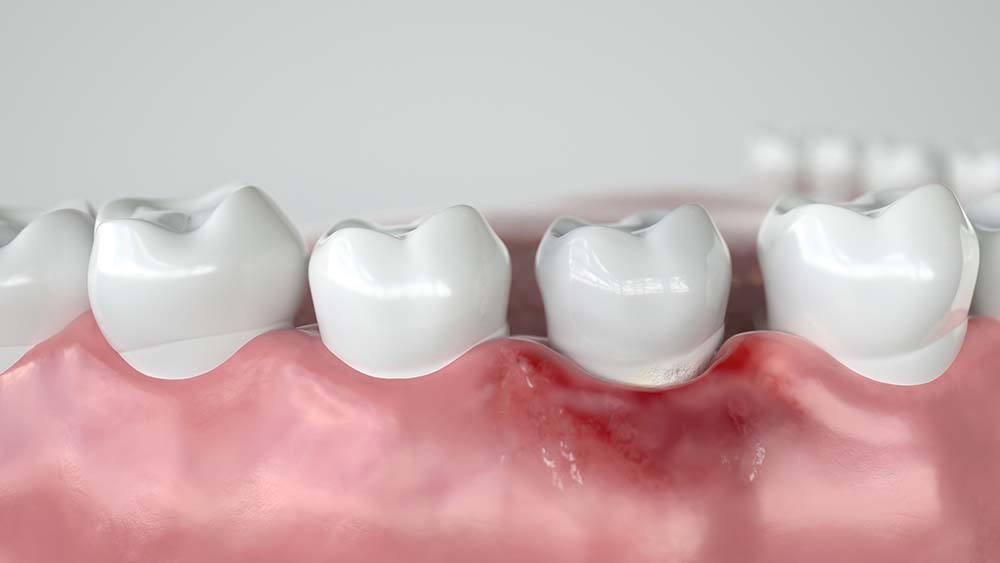
Periodontitis
Affects deeper layers of the periodontium. Accompanied by bleeding gums, resorption of the jawbone, and the formation of periodontal pockets. Periodontitis can be classified as:
- Localized (affects one / several teeth).
- Generalized (affects an entire row of teeth).
Periodontal Disease (Periodontosis)
An inflammatory chronic condition of the periodontium. It leads to the loss of both hard and soft tissues around the tooth. It arises due to bite defects, periodontal trauma, advanced periodontitis, and other causes. The danger of periodontitis lies in its asymptomatic progression. Its symptoms markedly differ from previous pathologies. Gums recede and acquire a pale color and the neck of the tooth becomes exposed. Wedge-shaped defects form. Eventually, tooth mobility develops. Untreated periodontitis leads to tooth loss.
Learn more about gum diseases treated by a periodontist.
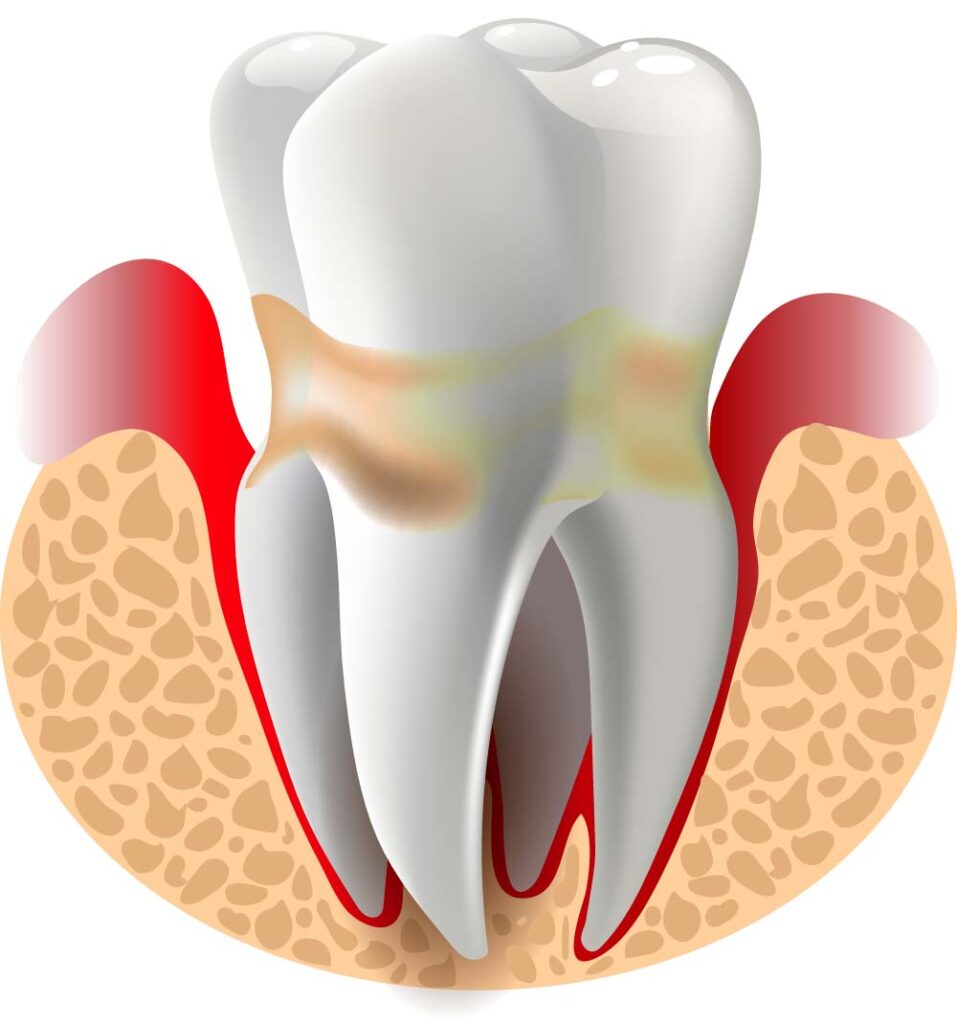
An Example of Treating a Patient with Gum Issues at Tetri’s Smile
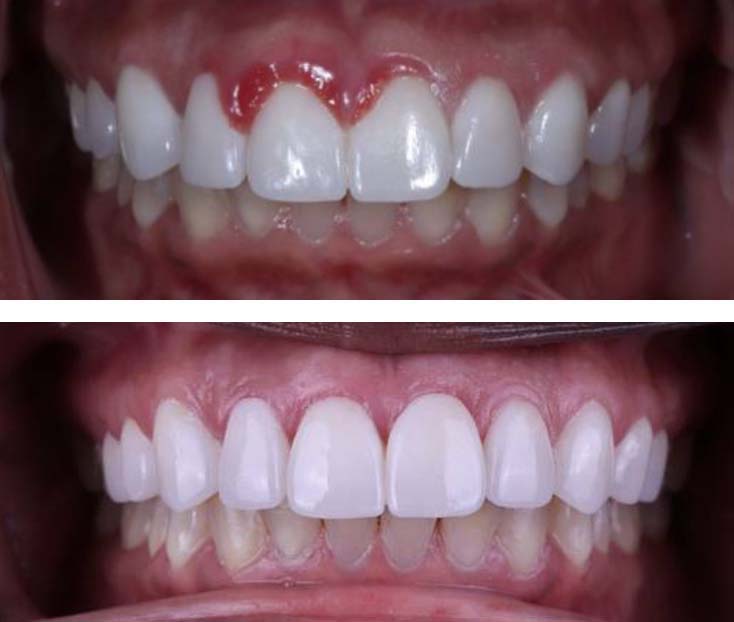
Certified Dental Periodontist
I am a specialist with 20 years of experience in cosmetic periodontology. Patients often come to me requesting to redo the work of other dentists.
For me, it’s important not only to alleviate the condition but also to diagnose and treat the root cause. I work not only at the level of teeth but also gums. After treatment, you will not only have beautiful teeth but also impeccable gum aesthetics.
Tooth Extraction
Tooth extractions are performed by doctors of various levels and specializations. However, not all of them can guarantee an excellent outcome of the procedure. Patients who undergo straightforward tooth extractions often encounter complications:
- significant trauma to soft/hard tissues in the intervention area;
- prolonged and excruciating pain after the procedure;
- the need for additional surgery to restore damaged tissues.
To avoid the mentioned issues and recover faster after the operation, have your teeth removed by a periodontist.
At Tetri’s Smile clinic, we guarantee safe tooth extractions using gentle methods. Prior to the procedure, we conduct thorough diagnostics. Dr. Tetri employs an ultrasonic instrument called the Piezotome. It allows for a gentle tooth extraction with simultaneous implantation. The Piezotome helps delicately displace the gum margin and painlessly remove the tooth from its socket.
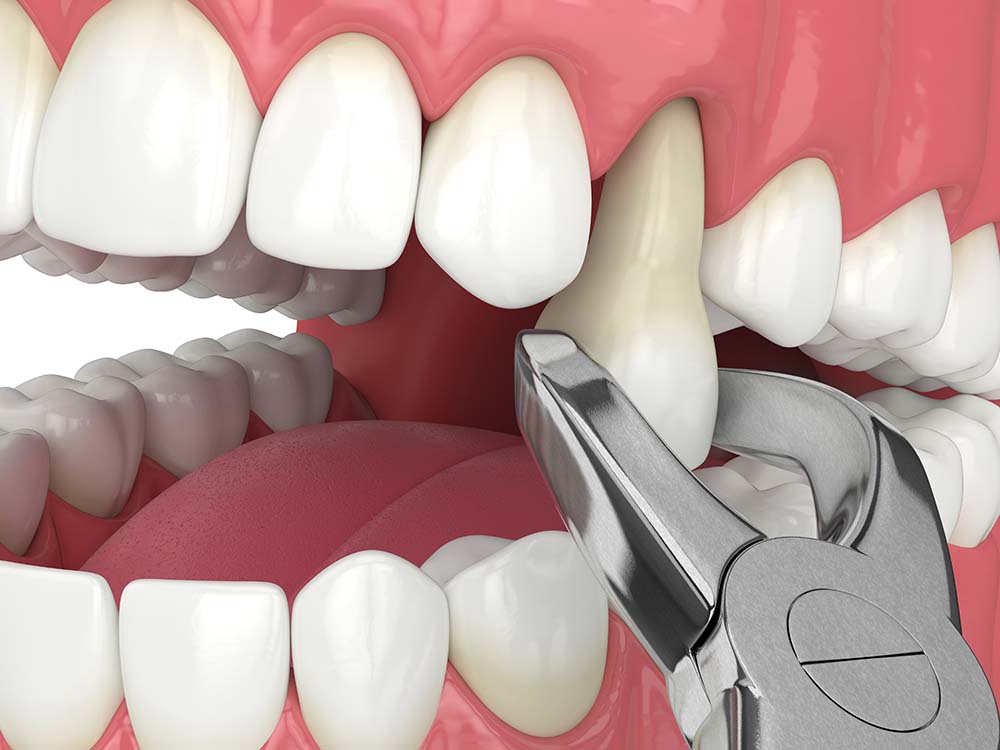
Bone Grafting
The jawbone supports facial muscles. Prolonged absence of teeth or advanced periodontal disease leads to its atrophy. Gradually, it loses volume and thins out. Due to its deficiency, the lips sink, and the chin sags. The face takes on a sunken appearance and ages prematurely.
Bone grafting addresses these issues. The procedure involves increasing bone volume in width/height through surgical means. It’s performed prior to dental implant placement. Whether to perform bone grafting or not is decided by the doctor based on the results of a computerized tomography scan.
Depending on the degree of atrophy, at Tetri’s Smile clinic, we increase bone volume using various methods :
- Alveolar ridge splitting
- Sinus lift (for bone atrophy in the upper jaw)
- Bone block grafting
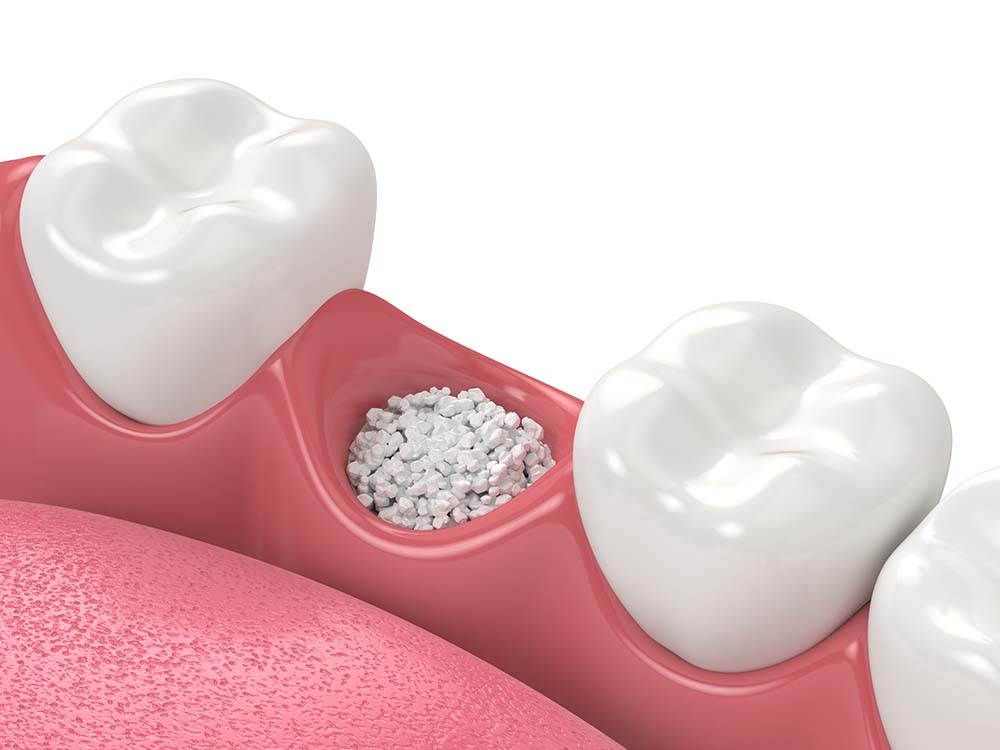
The doctor examines the oral cavity and reviews the patient's medical history. To rule out contraindications, he may recommend additional tests.
Diagnostic imaging is performed using the Morita Veraviewepocs 3D tomograph. It accurately determines the current bone volume, visualizes its location, as well as vessels and nerves.
All deposits are removed, and cavities and gum diseases are treated. Any sources of inflammation in the oral cavity are eliminated.
Gum Correction
Mechanical trauma or an inflammatory process in the periodontal tissues can lead to a defect in the gum contour. Gingivoplasty restores gum aesthetics. It is performed for patients who have:
- gum recession with exposed tooth root;
- gum detachment and the formation of periodontal pockets;
- a hood formed during the eruption of a wisdom tooth;
- disrupted natural gum contour after dental implantation.
Doctor Tetri at Tetri’s Smile clinic performs gum plastic surgery even in the most complex cases. He accurately assesses the condition and extent of gum involvement, conducts thorough diagnostics, and uses a dental microscope to achieve surgical precision in gum correction. The procedure is performed under sedation for a pain-free and relaxed experience.
For accelerating rehabilitation after gum disease treatments, Dr. Tetri:
- makes precise, minimally traumatic incisions and carefully places sutures;
- utilizes stem cells as well as platelet-enriched plasma.
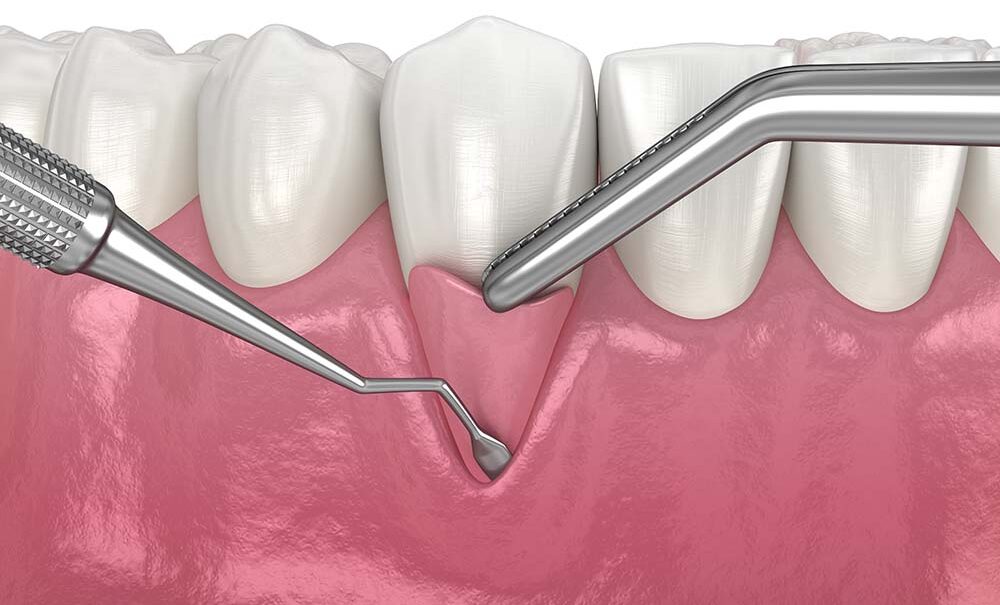
Gum correction case
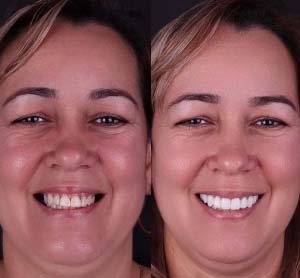
Scaling and Root Planing
Dental calculus forms even with good oral hygiene. Food particles get under the gumline and can’t be removed from there by a toothbrush. Gradually, such deposits turn into subgingival dental calculus. This is the main cause of inflammation in the soft tissues of the mouth.
A periodontist removes such deposits through deep teeth cleaning (scaling and root planing). The procedure involves:
- thorough cleaning of periodontal pockets from any subgingival deposits;
- polishing of tooth roots.
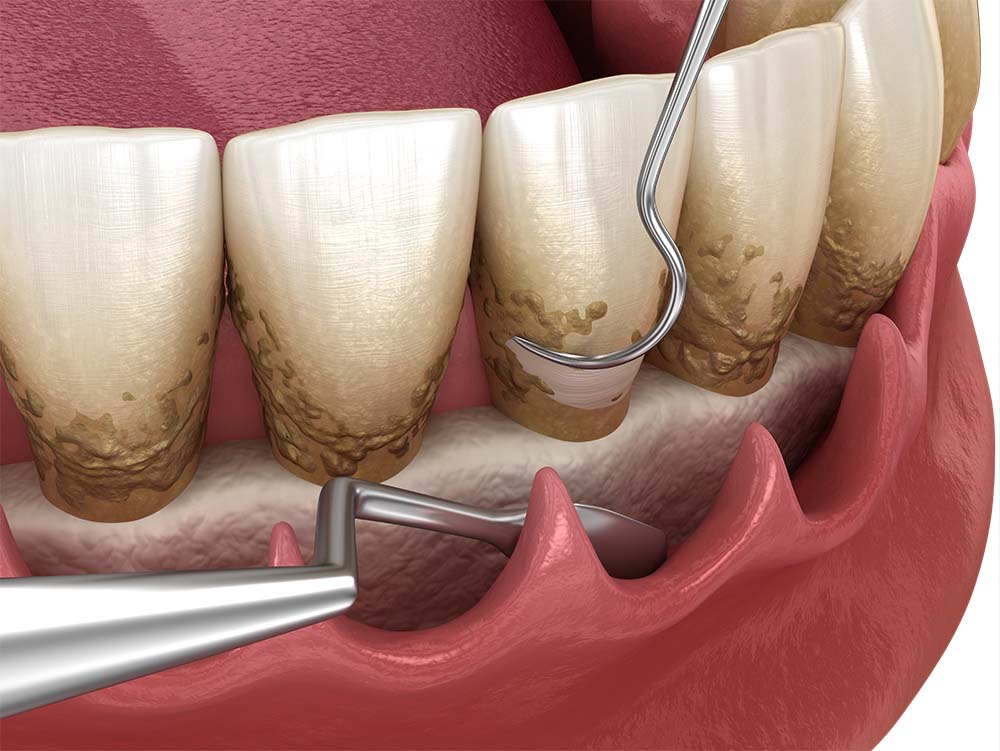
Stages of Deep Cleaning at Tetri's Smile:

